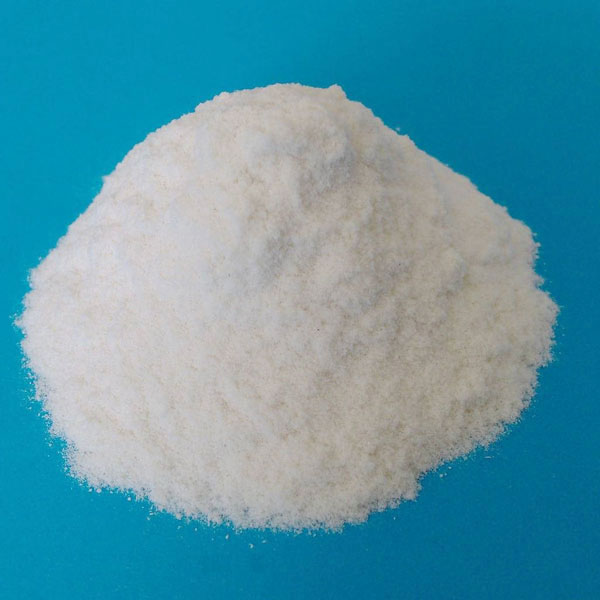TW EASTERN CHEM SINGAPORE PTE.LTD
Carboxymethyl Cellulose (CMC)

The aqueous solution of CMC has functions such as thickening, film-forming, bonding, water retention, colloid protection, emulsification, and suspension, and is widely used in industries such as petroleum, industry, food, medicine, toothpaste, ceramics, printing and dyeing, daily chemical, textile, and paper making. It is the most widely used gel.
1. Physical Properties
Carboxymethyl cellulose (CMC) belongs to the category of anionic cellulose ethers, with the appearance of white or slightly yellow flocculent fiber powder or white powder or particles, odorless, odorless, and non-toxic; Easily soluble in cold or hot water, forming a transparent solution with a certain viscosity. The solution is neutral or slightly alkaline, insoluble in organic solvents such as ethanol, ether, isopropanol, acetone, etc., and soluble in ethanol or acetone solutions with 60% water content. It has hygroscopicity and is stable to light and heat. Its viscosity decreases with increasing temperature. The solution is stable at pH 2-10, and when pH is below 2, solid precipitates occur. When pH is above 10, its viscosity decreases. Color change temperature 227 â, carbonization temperature 252 â, surface tension of 2% aqueous solution 71mn/n.
2. Chemical Properties
Cellulose derivatives derived from carboxymethyl substituents are treated with sodium hydroxide to form alkaline cellulose, which is then reacted with monochloroacetic acid to obtain it. The glucose unit that constitutes cellulose has three substitutable hydroxyl groups, thus obtaining products with different degrees of substitution. On average, 1mmol of carboxymethyl is introduced per 1g of dry weight, which is insoluble in water and dilute acid, but can swell and be used for ion exchange chromatography. Carboxymethyl pKa is approximately 4 in pure water and 3.5 in 0.5mol/L NaCl. It is a weakly acidic cation exchanger and is typically used for the separation of neutral and alkaline proteins at pH>4. Those with over 40% hydroxyl groups replaced by carboxymethyl groups can dissolve in water to form stable high viscosity colloidal solutions.
3. Main Use
Carboxymethyl cellulose (CMC) is a non-toxic and odorless white flocculent powder or particle, with stable performance and easy solubility in water. Its aqueous solution is a neutral or alkaline transparent viscous liquid, soluble in other water-soluble adhesives and resins, and insoluble in organic solvents such as ethanol. CMC can be used as an adhesive, thickener, suspension agent, emulsifier, dispersant, stabilizer, sizing agent, etc.
Carboxymethyl cellulose (CMC) is the largest, most widely used, and most convenient product among cellulose ethers, commonly known as "industrial monosodium glutamate".
1. Used for drilling, well digging, and other engineering projects for oil and natural gas:
â Mud containing CMC can form thin and hard filter cakes with low permeability on the wellbore, reducing water loss.
⥠After adding CMC to the mud, the drilling rig can achieve low initial shear force, making it easy for the mud to release the gas trapped inside, while quickly discarding debris in the mud pit.
âĒ Drilling mud, like other suspended dispersions, has a certain lifespan, and the addition of CMC can stabilize it and extend its lifespan.
âĢ Mud containing CMC is rarely affected by mold, so there is no need to maintain a high pH value or use preservatives.
âĪ Containing CMC as a drilling mud flushing fluid treatment agent, it can resist pollution from various soluble salts.
âĨ Mud containing CMC has good stability and can reduce water loss even at temperatures above 150 â. CMC with high viscosity and high degree of substitution is suitable for mud with lower density, while CMC with low viscosity and high degree of substitution is suitable for mud with higher density. The selection of CMC should be determined based on different conditions such as mud type and region, well depth, etc.
2. Used in the textile and dyeing industries, CMC is used as a sizing agent in the textile industry for sizing light yarns of cotton, silk and wool, chemical fibers, blends, and other fabrics.
3. CMC used in the paper industry can be used as a paper smoothing agent and sizing agent. Adding 0.1% to 0.3% CMC to the pulp can enhance the tensile strength of the paper by 40% to 50%, increase the compressive strength by 50%, and increase the knedability by 4-5 times.
4. CMC can be added to synthetic detergents as a dirt adsorbent; The glycerol aqueous solution of daily chemicals such as CMC in the toothpaste industry is used as the adhesive base for toothpaste; Used in the pharmaceutical industry as thickeners and emulsifiers; CMC aqueous solution is used for floating mineral processing after increasing viscosity.
5. Used in the ceramic industry as an adhesive, plasticizer, suspension agent for glaze, color fixing agent, etc. for making blanks.
6. Used in construction to improve water retention and strength.
7. In the food industry, CMC with high displacement degree is used as the thickener of ice cream, cans, instant noodles, foam stabilizer of beer, etc., and it is used as the thickener, binder or shaping agent in the processing of jam, syrup, fruit juice, Dim sum, ice cream drinks, etc.
8. The pharmaceutical industry selects CMC with appropriate viscosity as the adhesive, disintegrant, and suspension aid for tablets and suspensions.

